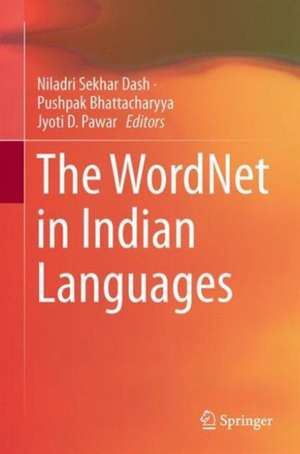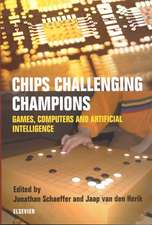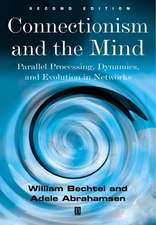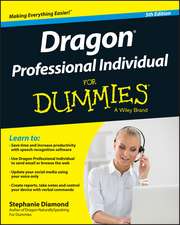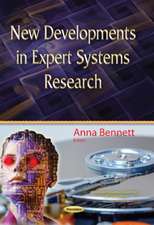The WordNet in Indian Languages
Editat de Niladri Sekhar Dash, Pushpak Bhattacharyya, Jyoti D. Pawaren Limba Engleză Hardback – noi 2016
The chapters discuss important methods and strategies of language computation, language data processing, lexical selection and management, and language-specific synset collection and representation, which are of utmost value for the development of a WordNet in any language. The volume overall gives a clear picture of how WordNet is developed in Indian languages and how this canbe utilized in similar projects for other languages. It includes illustrations, tables, flowcharts, and diagrams for easy comprehension.
This volume is of interest to researchers working in the areas of language processing, machine translation, word sense disambiguation, culture studies, language corpus generation, language teaching, dictionary compilation, lexicographic queries, cross-lingual knowledge sharing, e-governance, and many other areas of linguistics and language technology.
| Toate formatele și edițiile | Preț | Express |
|---|---|---|
| Paperback (1) | 558.20 lei 38-44 zile | |
| Springer Nature Singapore – 29 iun 2018 | 558.20 lei 38-44 zile | |
| Hardback (1) | 564.15 lei 38-44 zile | |
| Springer Nature Singapore – noi 2016 | 564.15 lei 38-44 zile |
Preț: 564.15 lei
Preț vechi: 705.19 lei
-20% Nou
Puncte Express: 846
Preț estimativ în valută:
107.96€ • 112.03$ • 90.24£
107.96€ • 112.03$ • 90.24£
Carte tipărită la comandă
Livrare economică 11-17 martie
Preluare comenzi: 021 569.72.76
Specificații
ISBN-13: 9789811019074
ISBN-10: 981101907X
Pagini: 221
Ilustrații: XVII, 264 p. 76 illus., 59 illus. in color.
Dimensiuni: 155 x 235 mm
Ediția:1st ed. 2017
Editura: Springer Nature Singapore
Colecția Springer
Locul publicării:Singapore, Singapore
ISBN-10: 981101907X
Pagini: 221
Ilustrații: XVII, 264 p. 76 illus., 59 illus. in color.
Dimensiuni: 155 x 235 mm
Ediția:1st ed. 2017
Editura: Springer Nature Singapore
Colecția Springer
Locul publicării:Singapore, Singapore
Cuprins
Chapter 1. IndoWordNet Pushpak Bhattacharyya.- Chapter 2. Insights on Hindi WordNet Coming from the IndoWordNet Laxmi Kashyap, Salil Rajeev Joshi and Pushpak Bhattacharyya.- Chapter 3. Defining Language Specific Synset (LSS) in IndoWorNet: Some Theoretical and Practical Issues Niladri Sekhar Dash.- Chapter 4. Problems in Translating Hindi Synsets into the Bangla WordNet Niladri Sekhar Dash.- Chapter 5. Development of Punjabi WordNet, Bilingual Dictionaries, Lexical Relations Creation and its Challenges R.K. Sharma and Parteek Kumar.- Chapter 6. Insights on the Konkani WordNet Development Process Shilpa N. Desai, Shantaram W. Walawalikar, Ramdas N. Karmali, and Jyoti D. Pawar.- Chapter 7. Malayalam WordNet S. Rajendran and K. P. Soman.- Chapter 8. Creating Marathi WordNet Lata Popale and Pushpak Bhattacharyya.- Chapter 9. Gujarati WordNet: A Profile of the IndoWordNet Brijesh S. Bhatt, C. K. Bhensdadia, Pushpak Bhattacharyya, Dinesh Chauhan and Kirit Patel.- Chapter 10. Issues in the Creation of Synsets in Odia WordNet: A Report Panchanan Mohanty, Ramesh C. Malik and Bhimasena Bhol.- Chapter 11. Building Telugu WordNet using Expansion Approach S. Arulmozi and M.C. Kesava Murty.- Chapter 12. Challenges, Problems and Issues Faced in Language Specific Synset Creation and Linkage in the Kashmiri WordNet Aadil Amin Kak, Farooq Ahmad, Nazima Mehdi, Mansoor Farooq, and Muneera Hakim.- Chapter 13. Language Specific Synsets and Challenges in Synset Linkage in Urdu WordNet Rizwanur Rahman, Mazhar Mehdi Hussain and Niladri Sekhar Dash.- Chapter 14. Sanskrit Wordnet at IITB Malhar Kulkarni.- Chapter 15. Word Sense Disambiguation Using IndoWordNetSudha Bhingardive and Pushpak Bhattacharyya.- Appendix I: The Team of the IndoWordNet.
Notă biografică
Niladri Sekhar Dash, Ph.D., is Associate Professor, Linguistic Research Unit, Indian Statistical Institute, Kolkata. He is also Editor-in-Chief, Journal of Advanced Linguistic Studies, principal investigator of the Indian Languages Corpora Initiative-Bengali and the Digital Bangla Pronunciation Dictionary. His main areas of research are: corpus linguistics, natural language processing, computational, lexicography, machine translation, WordNet design and development, lexical semantics, computer assisted language teaching, digital language resource development, language documentation and digitization, etc.
Pushpak Bhattacharyya, Ph.D., is Director, Indian Institute of Technology Patna. Previously, he was Vijay and Sita Vashee Chair Professor, Department of Computer Science and Engineering, Indian Institute of Technology Bombay, Mumbai; consortium leader of the Indradhanush WordNet in Indian languages; Associate Editor, ACMTransaction on Asian Language Information Processing; leader of multi-institute consortia projects on Indian language WordNets, Indian language search engine, and machine translation. Professor Bhattacharyya has been a visiting professor at Stanford University (2004), University of Grenoble (2005, 2009 and 2011) and distinguished lecturer at the University of Houston (2012). His research areas are: natural language processing, machine learning, cross lingual IR, information extraction, WordNet design and development, etc.
Jyoti D. Pawar is Associate Professor, Department of Computer Science and Technology, Goa University, Goa. She is co-consortium leader of the Indradhanush WordNet in Indian languages. Her research areas are: natural language processing (NLP), data mining, data structures, etc.
Pushpak Bhattacharyya, Ph.D., is Director, Indian Institute of Technology Patna. Previously, he was Vijay and Sita Vashee Chair Professor, Department of Computer Science and Engineering, Indian Institute of Technology Bombay, Mumbai; consortium leader of the Indradhanush WordNet in Indian languages; Associate Editor, ACMTransaction on Asian Language Information Processing; leader of multi-institute consortia projects on Indian language WordNets, Indian language search engine, and machine translation. Professor Bhattacharyya has been a visiting professor at Stanford University (2004), University of Grenoble (2005, 2009 and 2011) and distinguished lecturer at the University of Houston (2012). His research areas are: natural language processing, machine learning, cross lingual IR, information extraction, WordNet design and development, etc.
Jyoti D. Pawar is Associate Professor, Department of Computer Science and Technology, Goa University, Goa. She is co-consortium leader of the Indradhanush WordNet in Indian languages. Her research areas are: natural language processing (NLP), data mining, data structures, etc.
Textul de pe ultima copertă
This contributed volume discusses in detail the process of construction of a WordNet of 18 Indian languages, called “Indradhanush” (rainbow) in Hindi. It delves into the major challenges involved in developing a WordNet in a multilingual country like India, where the information spread across the languages needs utmost care in processing, synchronization and representation. The project has emerged from the need of millions of people to have access to relevant content in their native languages, and it provides a common interface for information sharing and reuse across the Indian languages.
The chapters discuss important methods and strategies of language computation, language data processing, lexical selection and management, and language-specific synset collection and representation, which are of utmost value for the development of a WordNet in any language. The volume overall gives a clear picture of how WordNet is developed in Indian languages and how this can be utilized in similar projects for other languages. It includes illustrations, tables, flowcharts, and diagrams for easy comprehension.
This volume is of interest to researchers working in the areas of language processing, machine translation, word sense disambiguation, culture studies, language corpus generation, language teaching, dictionary compilation, lexicographic queries, cross-lingual knowledge sharing, e-governance, and many other areas of linguistics and language technology.
The chapters discuss important methods and strategies of language computation, language data processing, lexical selection and management, and language-specific synset collection and representation, which are of utmost value for the development of a WordNet in any language. The volume overall gives a clear picture of how WordNet is developed in Indian languages and how this can be utilized in similar projects for other languages. It includes illustrations, tables, flowcharts, and diagrams for easy comprehension.
This volume is of interest to researchers working in the areas of language processing, machine translation, word sense disambiguation, culture studies, language corpus generation, language teaching, dictionary compilation, lexicographic queries, cross-lingual knowledge sharing, e-governance, and many other areas of linguistics and language technology.
Caracteristici
Provides detailed and elaborate description of WordNet for 18 Indian languages Includes diagrams and tables for easy understanding Presents data and information in a lucid and comprehensive way Includes supplementary material: sn.pub/extras
